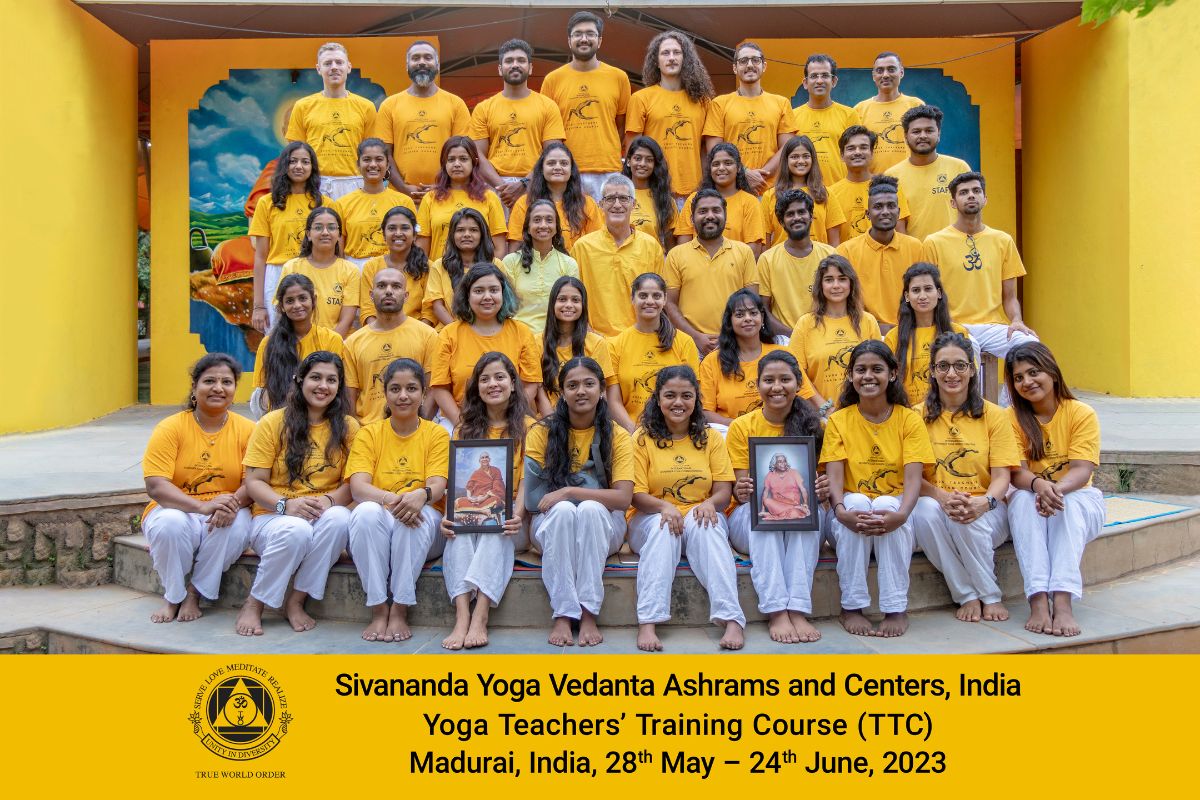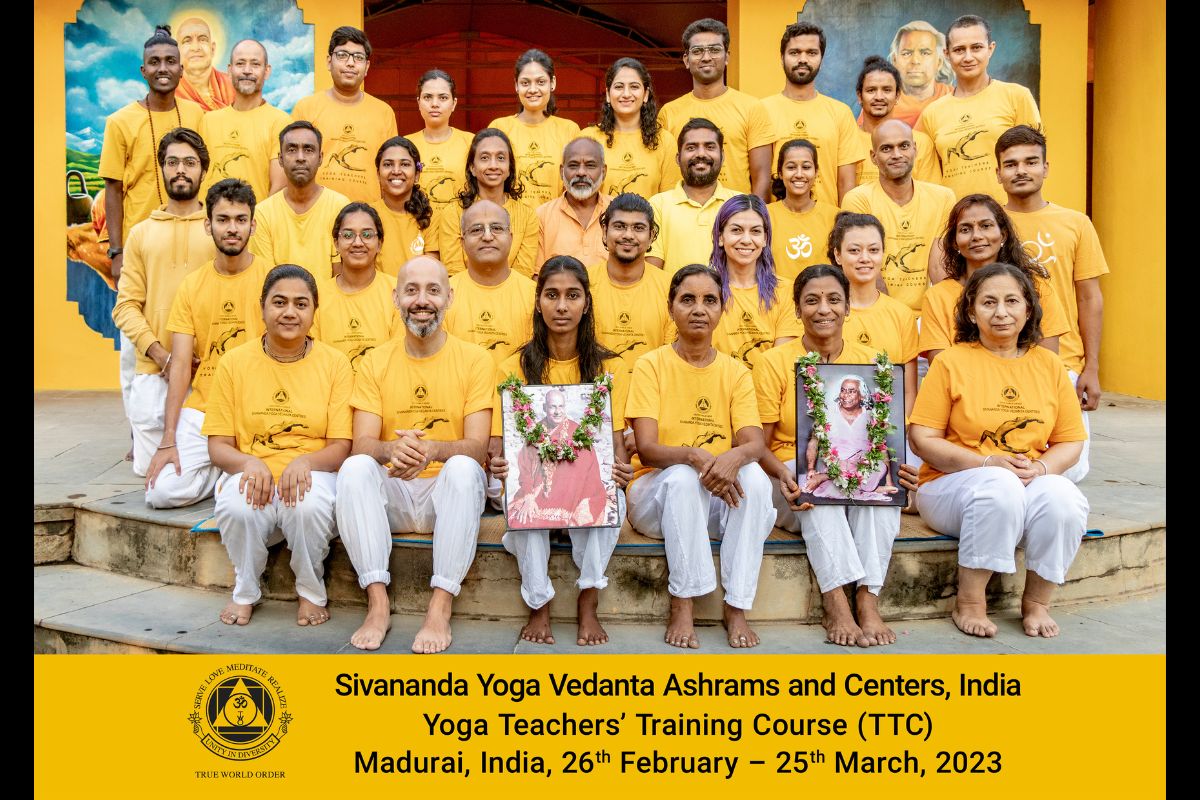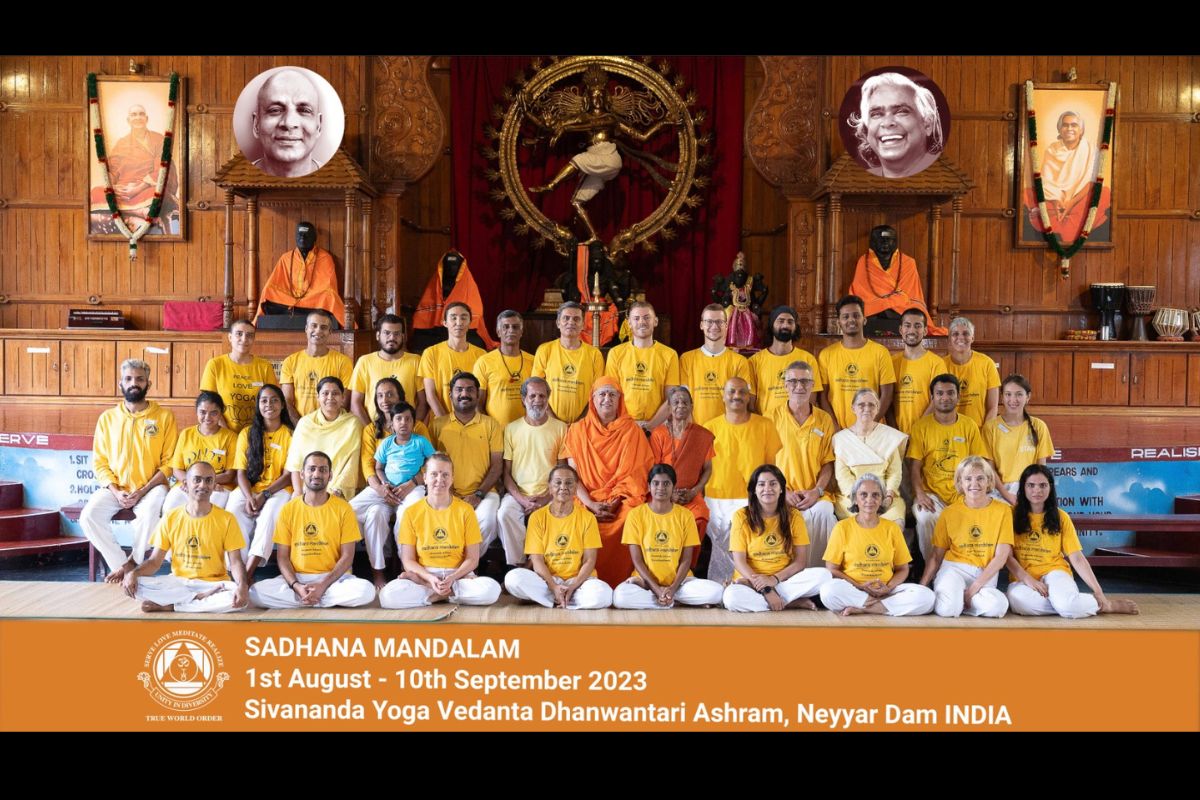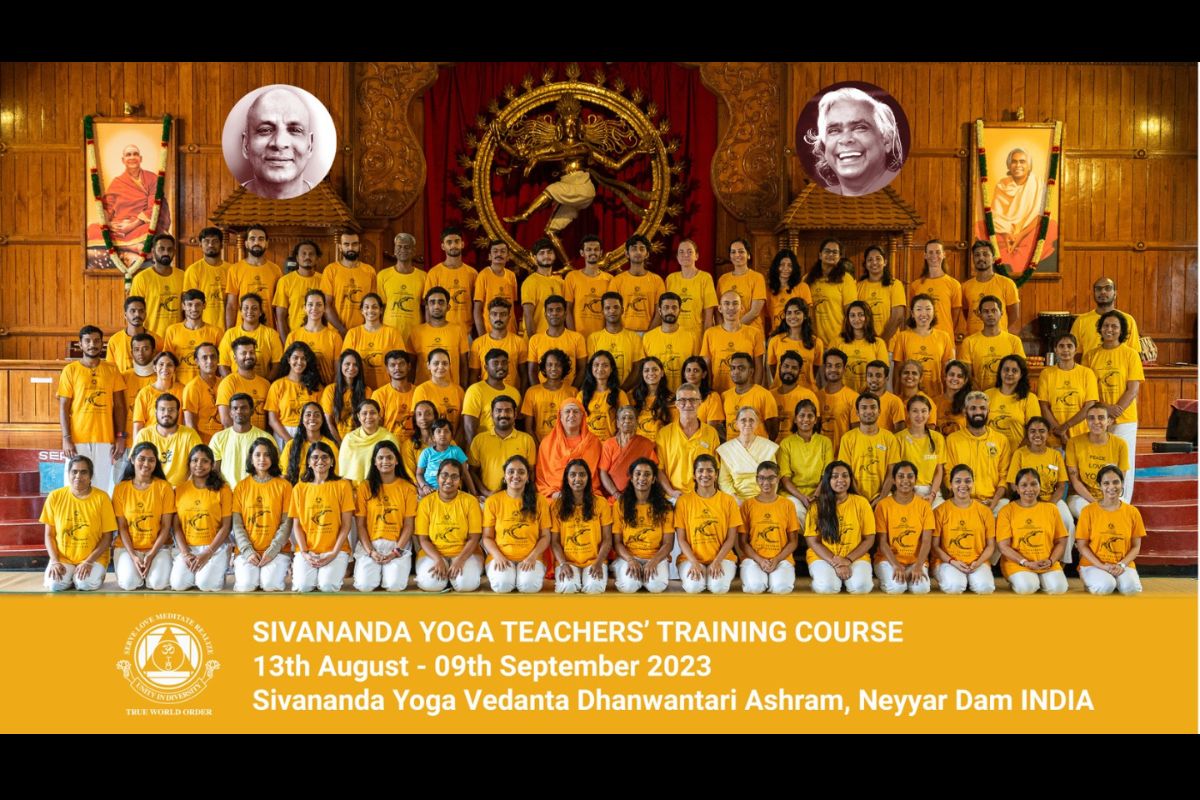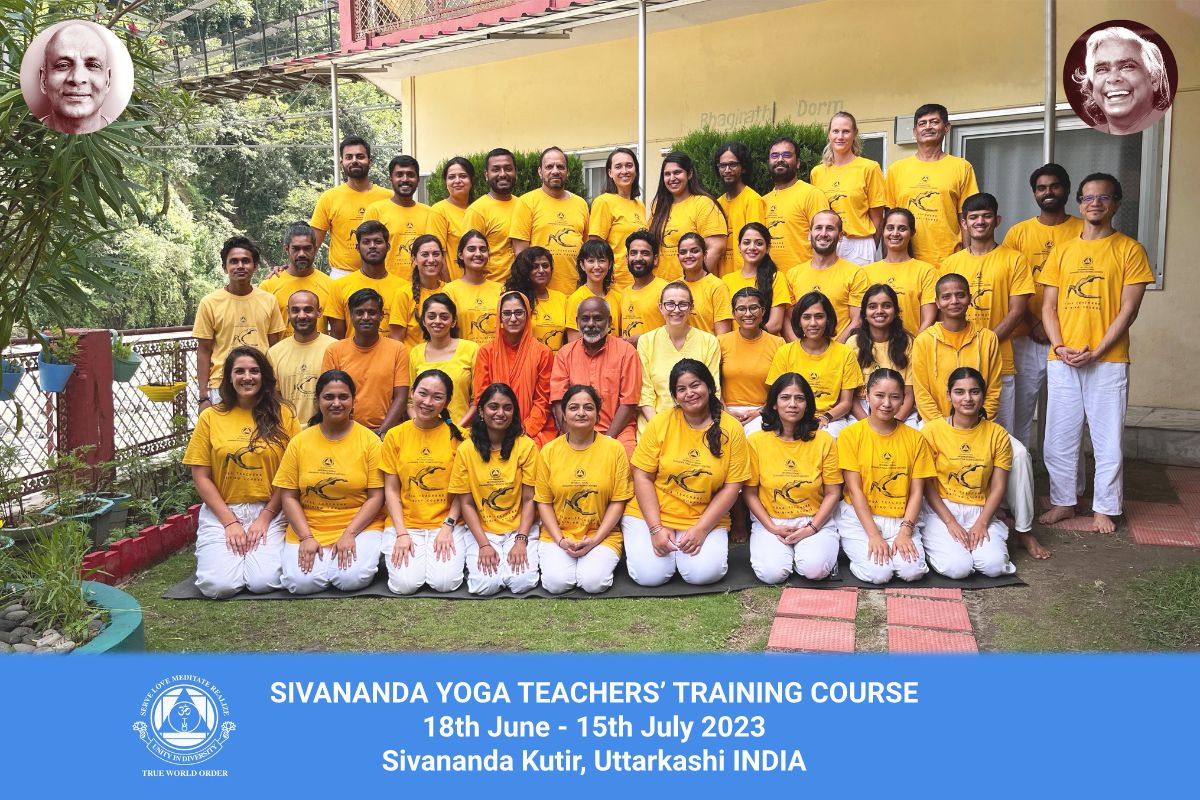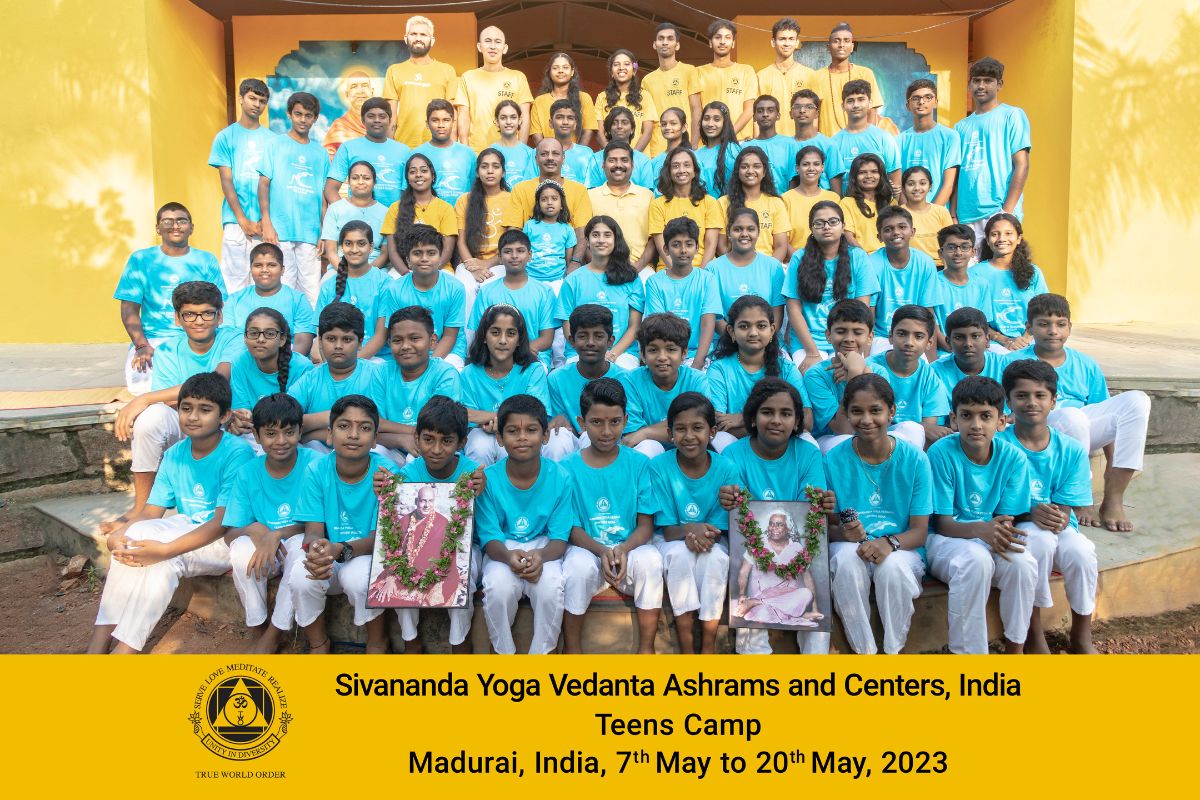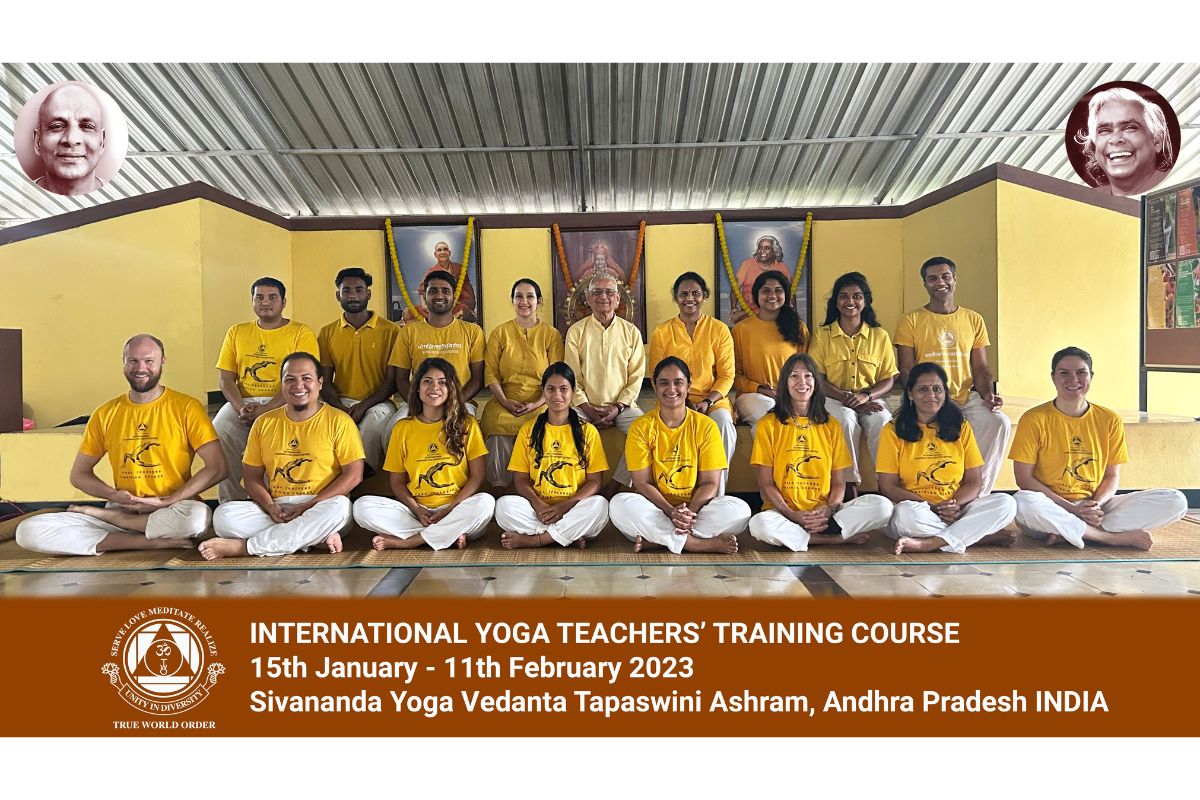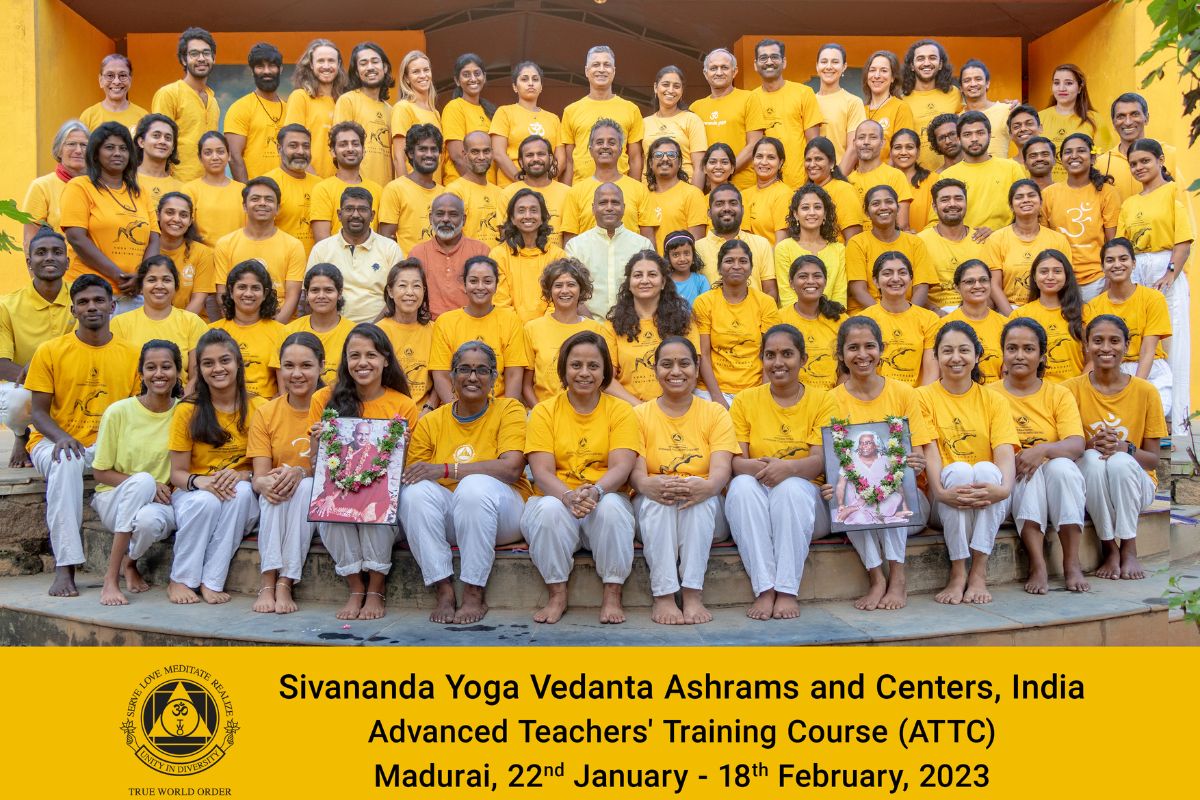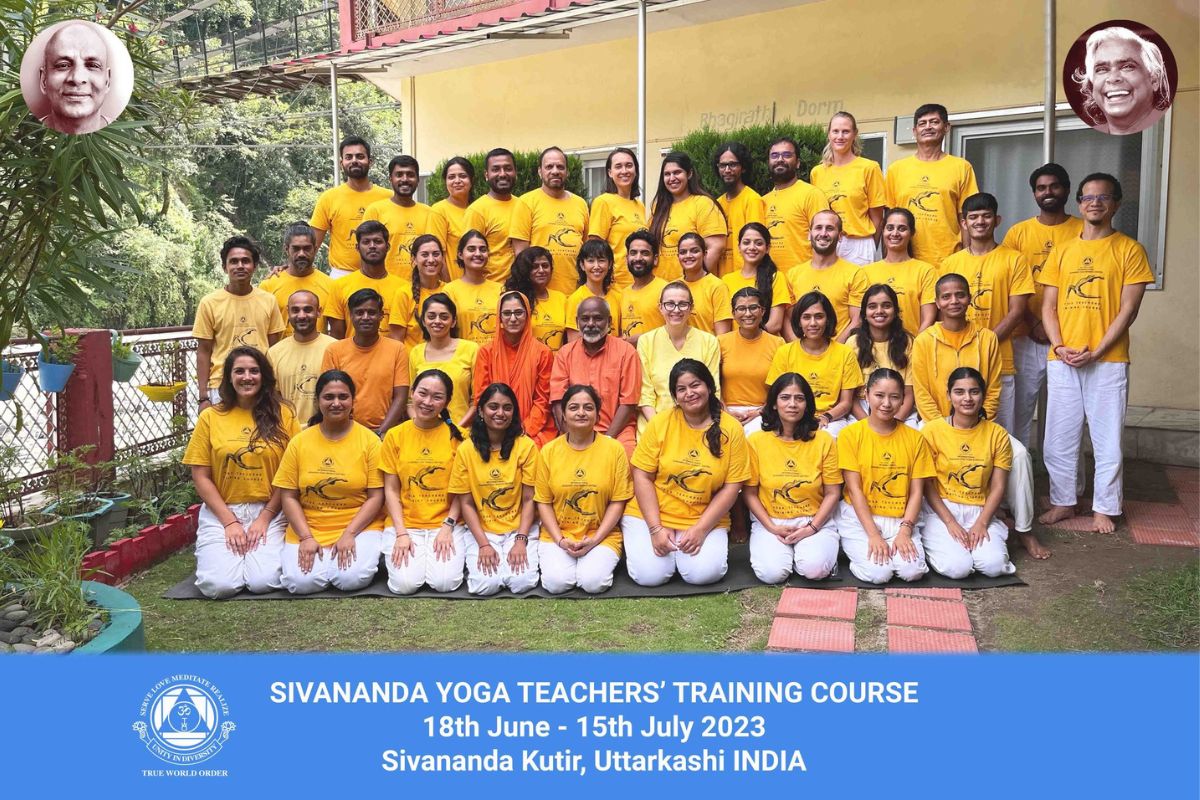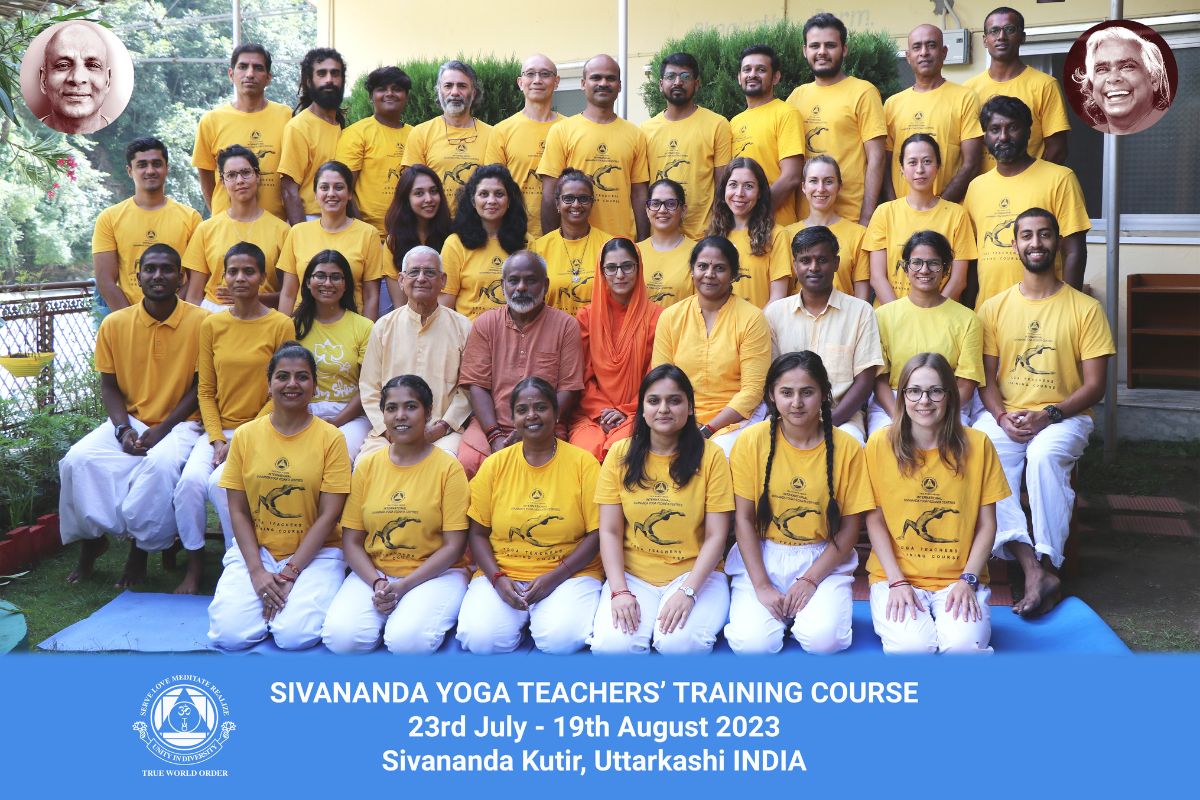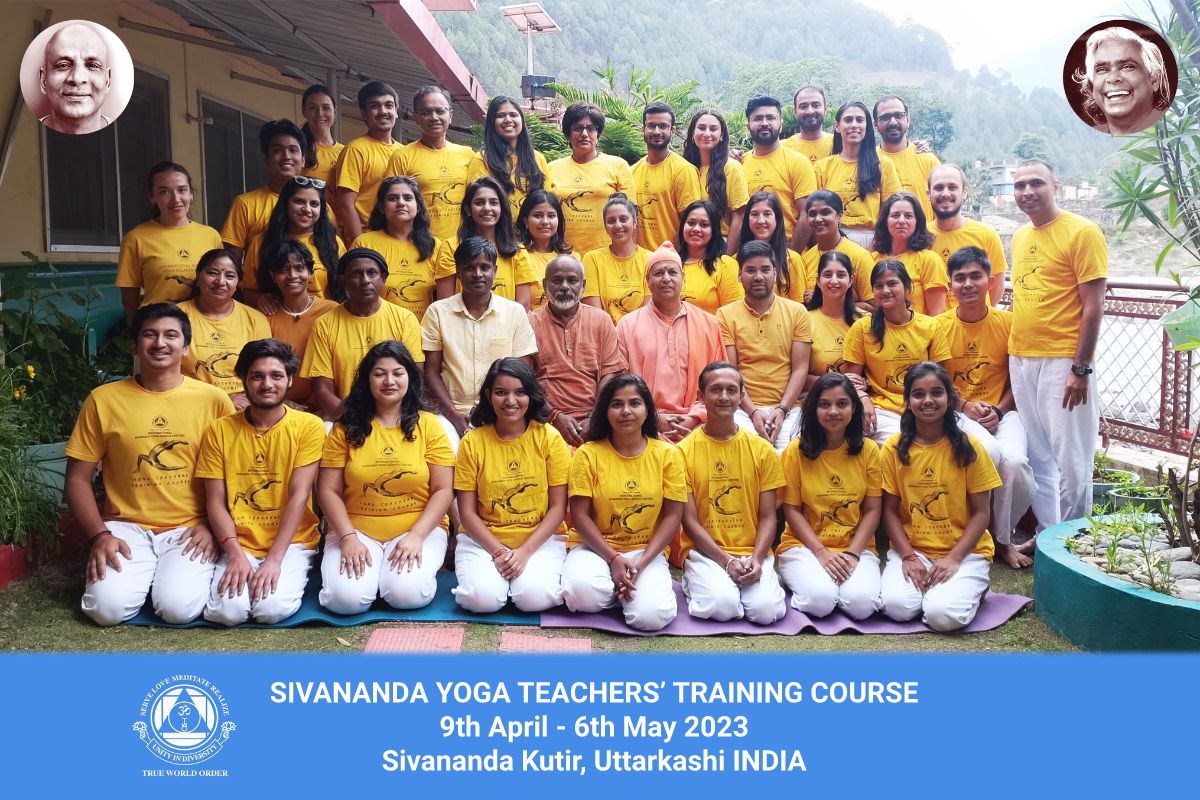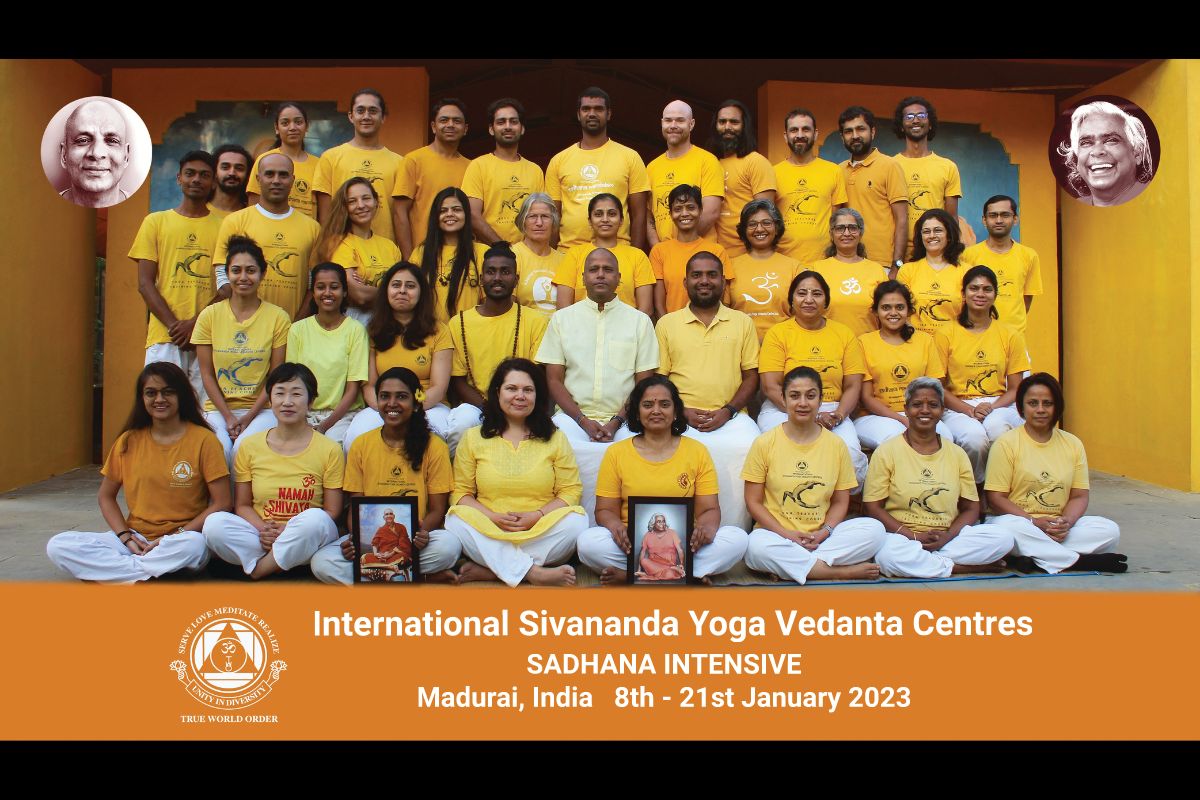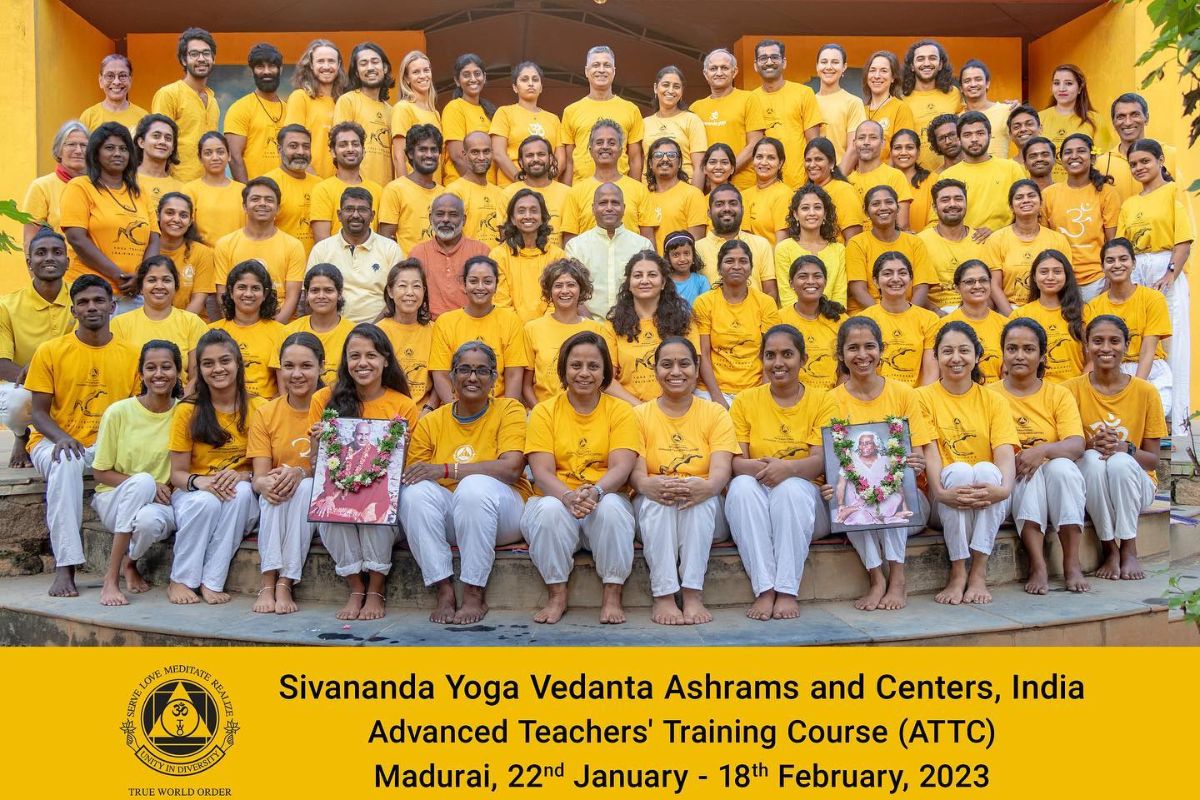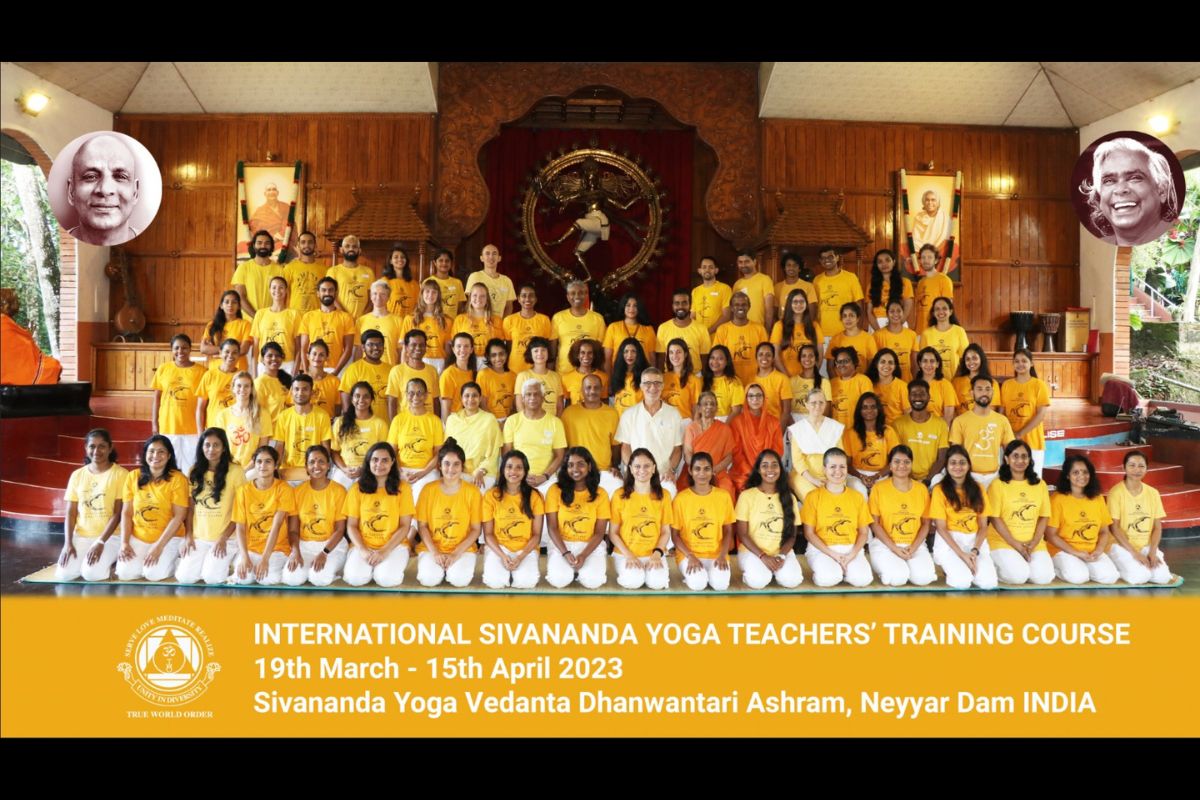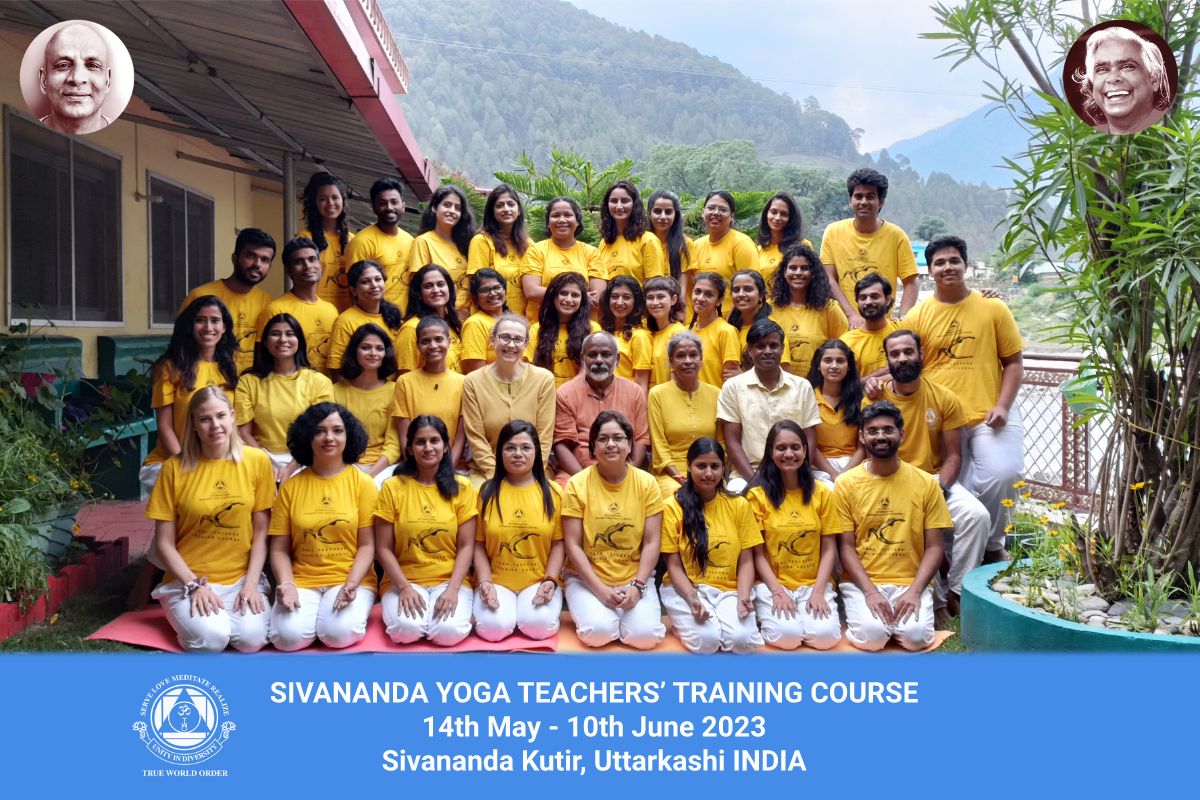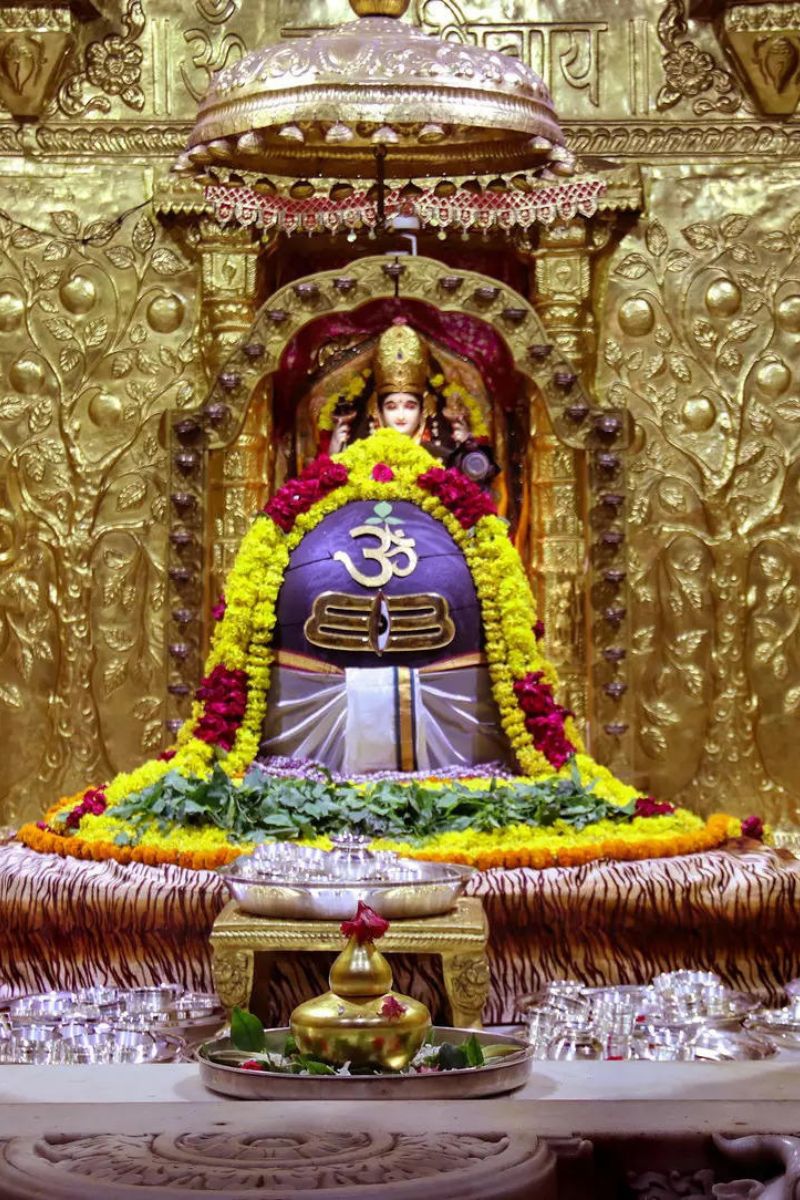
Om Namah Sivaya
Blessed Self,
Our world is facing continued turbulence with recession, inflation, and Covid and other viruses increasing again. Mental health continues to be a major issue around the world. We are observing that one of the main programs that Swami Vishnudevanandaji envisioned and created for our ashrams, the Yoga Vacation, is having a strong and consistent attendance, especially in the Uttarkashi Ashram, where we started the program only this year. People want to simply be in the ashram and on the banks of Ganges, and many who visit are extending their stay. While the Neyyar Dam ashram always has a busy Yoga Vacation, this year, even during off season we had many flocking to Madurai and to the very new Gudur ashram. This reinforces our belief in Swamiji’s teaching, “do not teach what you know, but teach what students need”. It was within Swamiji’s popular Yoga Vacation program where he gave lots of tools for students to take back into everyday life. We are glad to inform you that our high season in India is about to start and the registrations so far are encouraging. We are hoping for a very busy season in all our ashrams. Our centres have been consistently delivering daily classes, courses, and workshops, each one seeing an increase in student numbers all through the year.
Each and every teaching given by both Master Swami Sivanandaji and our teacher Swami Vishnudevanandaji was intended to help us realize our own potential and to remain positive throughout life, by a regular practice of meditation, pranayama, and yoga asanas, irrespective of our lifestyle and karmic duties.
This month’s topic, Asteya, or non-stealing invites us to ask the question, why do we steal from someone? We generally don’t feel good about ourselves and tend to lack confidence. Once the mind begins thinking this way, it can naturally progress to feeling jealous of others and what they have, and even to wanting to steal it from them. Desire is the root cause of stealing from others. Always remember, also, that any kind of stealing creates karma that requires one or more births to clean out.
Even with a regular meditation practice, if we don’t also engage in introspection and deeply work to know who we are, we can still lack self-confidence and feel jealous of what others have. However, a daily practice of meditation, pranayama, and yoga asanas does help to develop a feeling of contentment, being more happy with what we have, and paying less attention to what others have. In this way we slowly control our desires.
Contentment is the only true solution to prevent stealing from others. Doing daily practice is not enough but remembering that we did the practice throughout the day is very important. The world keeps going forward with ignorance, and when we remember our practice, we master the technique of how to move in the world without getting affected by it, appreciating our own existence.
We hope that an exploration of Asteya can help foster a deeper understanding and appreciation for oneself and lead to feeling good about who you are.
May Master and Swamiji’s blessings be with you all.
Pranams,
Sivananda Yoga Vedanta Ashrams & Centres, India
Asteya, or non-stealing is one of the most important of the yamas (restraints) or ethical considerations in Raja Yoga. However, it is surprisingly difficult to find much written about Asteya. Perhaps we consider it in the most simplistic of terms: not stealing. That’s fairly straightforward. We know that we are not meant to steal from others, however, can we explore Asteya in more nuanced terms both as yoga practitioners and as yoga teachers?
Although we may not steal, we often do desire and covet something another person has. In our practice we can desire for the practice that another has, at least what we imagine it to be from outside. We need to find ways to curb desire and cravings both for possessions and for enjoyment. Instead of craving something in our practice, feeling as though our practice is somehow lacking, can we imagine that our practice is bigger than we need it to be? Perhaps big enough to give it to someone else? Can we imagine our practice to be in support of someone else who needs it? Could that counteract the craving? As teachers we can examine our relationship with money and compensation. Do we offer teaching to those who can’t afford fees? Do we worry about paying the bills, making enough money?
In this issue we share Swami Sivananda’s words on Asteya, showcase the most looted temple in India which stands as testament to the power of faith to overcome, Yoga and Ayurveda tips for the fall season, and some views from the community on Swami Sivananda and giving. We hope you enjoy the newsletter and find some things to reflect upon. As usual, please feel free to reach out to us with your thoughts and feedback: [email protected]
Photo Update: 2023 Group Photos Round-up
2023 has been an interesting year. Our Teachers’ Training Courses seem to be increasing in size again, and we are seeing many foreign students return to India for study and travel. Of note, our Ashram in Netala, on the banks of the Ganga, has seen much interest in sadhana and study in the Himalayas by foreign students from various countries. We are so pleased to share ideas and perspectives and in creating a shared community and unity in diversity.
Here is a selection of our course and programme photos from 2023. See if you can find yourself here!
Research/Links
An important question, often discussed during the Teachers’ Training Course is whether the Headstand or Sirshasana increases blood flow to the brain. A recent study examines the effect of Sirshasana on the blood flow to the brain through ultrasound examination of the internal carotid artery, and it suggests that the Headstand does not increase the blood flow to the brain. Read more here:
https://pubmed.ncbi.nlm.nih.gov/31219304/
A further study examines changes to cerebral blood flow while holding the breath:
https://pubmed.ncbi.nlm.nih.gov/10472977/
Spiritual Calendar
October 10 – Ekadasi
October 14 – New Moon
October 15 – Navarathri starts
October 24 – Vijaya Dasami
October 25 – Ekadasi
October 28 – Full Moon
Upcoming Courses:
Learn, Practise & Grow with Us!
Teachers’ Training Course (TTC)
October 15 to November 11, Madurai, Tamil Nadu
November 12 to December 9, Neyyar Dam, Kerala
November 19 to December 16, Madurai, Tamil Nadu
Dec 17 to January 13, 2024, Gudur, Andhra Pradesh
For more details, click here
Sadhana Intensive Course (SI)
October 15 to 28, Netala, Himalayas
For more details, click here
Courses in Thailand this fall at the Phu Chaisai Mountain Resort in Chiang Rai
Teachers’ Training Course, October 1 to 28, 2023
Advanced Teachers’ Training Course, October 1 to 28, 2023
Yoga Vacation, October 7 to 11 and October 21 to 25, 2023
For more details, click here
Sivananda Integrated Yoga Vedanta Ayurveda Meditation Music (SIYVAM)
October 24, 2023 to March 22, 2025 (18 months)
For more details, click here
Teachings Excerpt:
Structure of Yoga Sadhana by Swami Sivananda
Ethical discipline is incumbent for success in Yoga. Ethical discipline is the practice of right conduct in life. The two moral pivots of Yoga are Yama and Niyama, which the aspirant must practise in his daily life. These correspond roughly to the Ten Commandments of Lord Jesus or to the noble eightfold path of Lord Buddha. Non-injuring (Ahimsa), truthfulness (Satya), non-stealing (Asteya), continence (Brahmacharya) and non-covetousness (Aparigraha) are the component parts of Yama. Internal and external purification (Saucha), contentment (Santosha), austerity (Tapas), study of religious and philosophical books (Swadhyaya) and self-surrender to the Lord (Ishwarapranidhana) come under Niyama. Practice of Yama and Niyama will eradicate all the impurities of the mind. In fact, Yama and Niyama form the corner-stones of Yoga Philosophy.
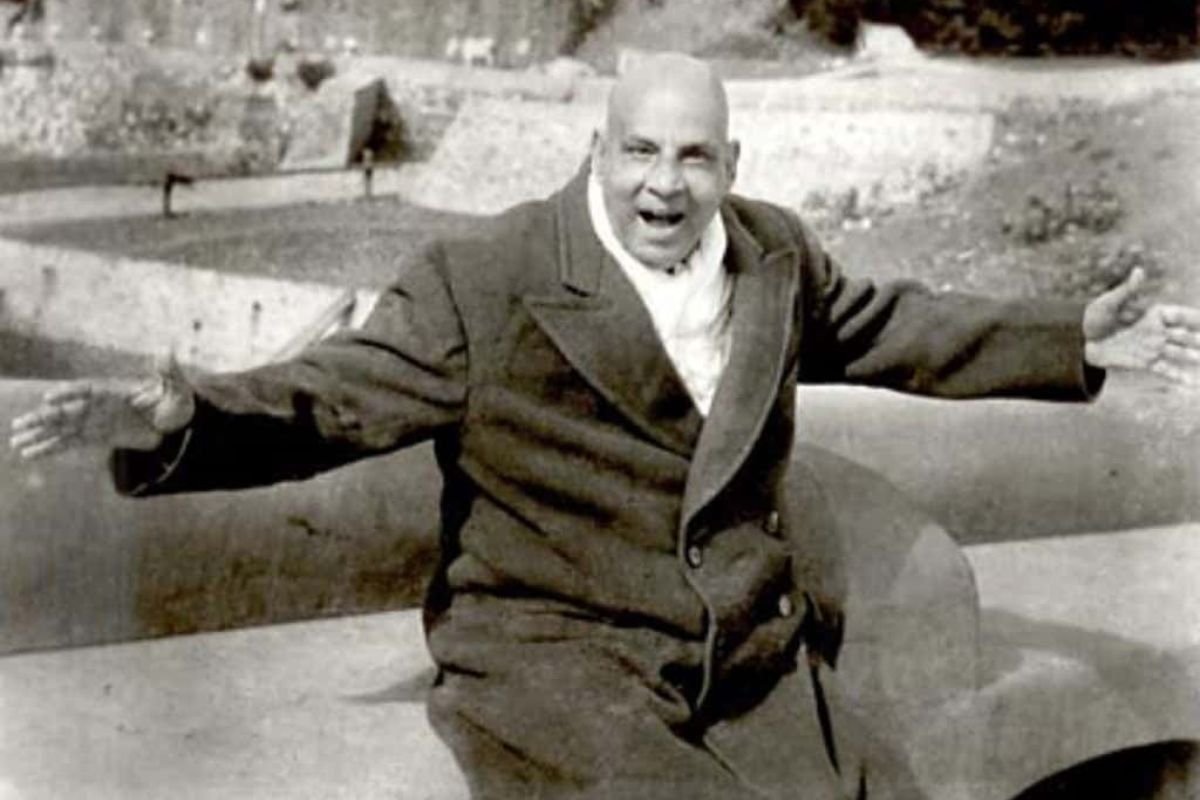
Non-stealing (Asteya) [comes in order, after non-injury (Ahimsa) and Truthfulness (Satya)]. You must be satisfied with what you get by honest means. The law of Karma is inexorable. You will have to suffer for every wrong action of yours. Action and reaction are equal and opposite. Amassing wealth is really theft. The whole wealth of all the three worlds belongs to the Lord. You are only a caretaker of this wealth. You must willingly share what you have with all and spend it in charity.
What is wanted is deep inner life. Silence the bubbling thoughts. Keep the mind cool and calm. Open yourself to higher spiritual consciousness. Feel the Divine Presence and Divine Guidance. Fix your mind at the lotus-feet of the Lord. Become like a child. Speak to him freely. Become absolutely candid. Do not hide your thoughts. You cannot do so because He is the Inner Ruler (Antaryamin). He watches all your thoughts. Pray for mercy, light, purity, strength, peace and knowledge. You will surely get them.
A Yogic student should abstain from greed. He should not receive luxurious presents from anybody. Gifts affect the mind of the receiver. These five virtues must be practised in thought, word and deed, for they are not merely restraints but change the character of the practitioner, implying inward purity and strength.
Two things are necessary for attaining success in mind-control, viz., practice (Abhyasa) and dispassion (Vairagya).
You must try your level best to be free from any desire for any pleasure, seen or unseen, and this dispassion can be attained through constant perception of evil in them. Dispassion is renunciation of attainment. It is aversion to sensual enjoyments herein and hereafter. The detachment or dispassion is of two kinds, the lower and the higher. Vijnana Bhikshu distinguishes the inferior and the superior types of Vairagya in the following way: “The former is a distaste for the good things of life, here or hereafter, due to the experience that they cannot be acquired or preserved without trouble, while their loss causes pain and that the quest is never free from egoistic feelings. The latter, however, is based on a clear perception of the difference between intelligence and the objects that appear in its light.”
There are various stages in dispassion. The determination to refrain from enjoying all sorts of sensual objects is the first stage. In the second stage certain objects lose their charm for the spiritual aspirant and he attempts to destroy the attraction for others also. In the third stage the senses are controlled, but a vague longing for the sensual enjoyment remains in the mind. In the fourth the aspirant loses completely all interest whatsoever in the external objects. The final stage is a state of highest desirelessness. It is this kind of dispassion that bestows Absolute Independence on the Yogi. In this stage the Yogi renounces all kinds of psychic powers even such as Omniscience, etc.
It is by practice and dispassion that the passage of thought towards external objects can be checked. Mere indifference will not serve the purpose. Practice is also necessary. Remembering God always is also practice. Lord Krishna says to Arjuna with reference to this practice of controlling the mind: “Abandoning without reserve all desires born of the imagination by the mind, curbing in the aggregate of the senses on every side, little by little let him gain tranquillity by means of reason controlled by steadiness; having made the mind abide in the Self, let him not think of anything. As often as the wavering and unsteady mind goeth forth, so often reining it in, let him bring it under the control of the Self.” (Bhagavad Gita, Ch. VI-24, 25, 26)
Mind is drawn towards external objects by the force of desire. By convincing oneself of the illusoriness of sense-objects through an investigation into their nature and by cultivating indifference to worldly objects, the mind can be restrained and brought back to the Self to abide finally. By virtue of this practice of Yoga, the Yogi’s mind attains peace in the Self. Practice consists in constantly repeating the same idea or thought regarding some one object. By constant reflection and exercise of will-power, suggestions should be given to the subconscious mind not to look for enjoyment in the changing world without, but in the changeless within. You should exercise great vigilance to get hold of opportunities, when the mind dwells on sense-objects, suggest to it new meanings and interpretations and make it change its attitude towards them with a view to its ultimate withdrawal there from. This is called practice.
Restraint does not come in a day, but by long and continued practice with zeal and enthusiasm. The progress in Yoga can only be gradual. Many people give up the practice of concentration after some time, when they do not see any tangible prospect of getting psychic powers. They become impatient. They do little and expect much. This is bad. Doing any kind of practice by fits and starts will not bring the desired fruit. Direct experience is the goal of life. Though the effort of practice is painful in the beginning, yet it brings Supreme Joy in the end. Lord Krishna says to Arjuna: “Supreme Joy is for this Yogi, whose mind is peaceful, whose passionate nature is controlled, who is sinless, and of the nature of the eternal!” (Bhagavad Gita, Ch. VI-27)
Desire is born of ignorance (Avidya). Attachment, longing and preference are the constituents of desire. Do not endeavour to fulfil desires. Try to reduce your desires as best as you can. Withdraw the fuel of gratification. Then the fire of desire will get extinguished by itself. Just as a ghee less lamp dies out when the ghee is withdrawn, even so the fire of desire dies when the fuel of gratification is withdrawn. If attachment is eradicated then longing and preference for objects will die by themselves.
Man commits various kinds of sins and injures others, when he exerts to get the desired objects. He has to reap the fruits of his actions; hence he is brought again and again in this round of births and deaths. If you increase one object in the list of your possessions or wants, the desire also increases ten times. The more worldly objects you possess, the more distant you are from God. Your mind will always be thinking and planning as to how to get and guard the objects, how to earn tons of money and keep them safe. If the acquired objects are lost, your mind is completely upset. Cares, worries, anxieties, and all sorts of mental torments increase with the objects.
Temple Showcase:
The Most Looted Temple of India, Sree Somnath Jyotirling Temple, Gujarat
Somnath Temple stands as a testament of its devotees’ faith, which has surpassed traditions and Islamic invasions to stand strong and tall till date. The most looted temple of India, it is known for its riches that led the invaders to invade its host of wealth seventeen times throughout its history.
‘Soma’ refers to the moon and ‘Natha’ refers to the lord, thus, ‘Somnath’ means ‘The Lord of the Moon’, one of the references to Lord Shiva. The legendary story behind Somnath Temple is symbolic of its connection with the moon from where the magnificent temple inherits its name. As per legend, the story of the Somnath Temple goes back to the Puranas, mentioned in the Rig Veda, Shiv Purana, Skanda Purana, and Shreemad Bhagavat, all of which mention Chandra Dev (The Moon God). Chandra Dev had 27 wives who were the daughters of Daksha Prajapati. Chandra Dev loved Rohini the most out of all his wives and their father cursed Chandra for neglecting his other daughters. This made Chandra lose his radiance and the world became dark with no moonlight. Chandra went to Prabhas Teerth to worship Lord Shiva and get free from the curse of darkness. It is believed that after getting free from the curse, Chandra dev built the Somnath Temple.
Since the temple has experienced multiple invasions, the modern-day temple was last built with the support of India’s first Deputy Prime Minister Sardar Vallabh Bhai Patel and the Hindu community soon after independence. Among the 12 Jyotirlingas, Somnath temple is the first Jyotirlinga shrine of Lord Shiva. ‘Jyoti’ represents light, and ‘linga’ represents the abstract form of Lord Siva. Jyotirlinga signifies the places where Shiva appeared in the form of radiant and infinite light and where Lord Shiva is worshipped in its eternity.
Somnath Temple is located in Gujarat at the shore of the Arabian ocean. The temple architecture resonates with the ornate orientation of the Chalukya style and is made of sandstone. 155-feet tall and seven storied, the temple has three main areas: the Garbhagraha or the womb chamber, the Sabhamandapam or the assembly hall, and the Nrityamandapam or the performance hall. The temple Kalash, or spire, weighs about 10 tonnes and the flagpole is about 8.2 meters long. The inscriptions in the temple indicate that there is no land which falls within a straight line of its seashore and Antarctica. The Temple complex contains a pillar with an arrow pointing towards Antarctica. Just behind the temple you can experience the vastness of the Arabian Sea and view of this south passage.
The Somnath Temple can be most easily visited from the city of Mumbai.
Practice and Nutritional Tips:
Yoga and Ayurveda Practices for Fall Season
Think fall and the first thing that comes to your mind is the dryness in weather. In Ayurveda, these qualities of the autumn season can be decoded in the language of energetics as the Vata season which possesses similar traits as that of dryness, roughness, cold and windy environment. Also, fall is the time of transition from hot to cold season and the spells of dryness and windy air begin to show-up in nature. Trees and plants begin to dry out, as the earth begins to get brown with the greens in nature diminishing.
Does this tell us anything about our own selves? We are the microcosm of the macrocosm and all that is going on in nature is replicating itself within our own selves. Body feels drier, skin feels rough, mind may feel ungrounded and spacey as your orientation slowly begins to shift from cold foods to hot foods and beverages. The shifts in nature lead to imbalances in the body and mind that make us feel drier and spacey during this seasonal transition. Thus, adjusting diet and lifestyle is important for inner balance during this time.
Yoga and Ayurveda fall practices support that inner balance that we need for a healthy body and sound mind, especially during the transition phase. Adopting grounding Yoga practices, balancing foods, and slowing down lifestyle during this time can go a long way in supporting a healthy transition from autumn to winter.
Balancing Yoga and Ayurveda Guidelines for Fall Season:
- Bring Rhythm & Flow to Your Day: Vata tendencies are higher in nature during fall and such tendencies may show up in our mental patterns too in the form of spacey, anxious, overwhelmed, and ungrounded feelings. Having a daily routine avoids that spaciness to set in.
- Reset Digestion: Fall season is the transition time between summers and winters as you are moving from eating light and airy foods towards denser and heavy foods according to changing energies. The digestion must be prepared for digesting these heavier and dense foods. The best way to strengthen the digestive power includes eating less and not consuming raw, dry foods to give digestion the required break it needs before the onset of winter. Including churana blends like trikatu powder and ginger also fuels the agni.
- Perform a Detox: If you experience a slowdown during the fall season, it’s the burden of summer toxins you are carrying within you that slow you down. Perform a gentle cleanse consisting of soups, stews, and khichdi to rest the system for the upcoming season.
- Include Grounding Foods in Diet: In Vata season the dire need of the body is deep nourishment. Include more substantial, oily, and nourishing foods in your diet this time of the year. Consume warm foods with warming and stimulating spices to stay moisturised within. Stay away from dry, dehydrating, raw foods that can set in Vata tendencies. Go high on foods like pumpkins, ghee, fats, oatmeal, steamed vegetables, hearty grains, soups, and stews.
- Adopt Grounding Yoga Practices: Yoga this time of the year must be about grounding and earthing practices to establish a connection with Mother Earth. Thus, practices that bring about strength, stability, and stillness within you neutralise the Vata intensity.
The following Yogic practices help you ground during the fall season:
- Sun Salutations: To counteract the autumn chill, keep the body warm, and increase blood circulation.
- Twists: Stimulate the abdominal organs. Practice Revolved Triangle Pose.
- Side Stretches: To improve digestion and elimination and create space in the body. Practice wide-legged forward bends and their twisting variations.
- Backbends: To regain spinal flexibility and support smooth nervous system activities. Practice bow pose.
- Strengthening and Stabilizing Postures: To support a sense of strength and stability. Practice any of the variations of Trikonasana.
- Relaxation: Savasana practice to settle down the Vata movement.
Adopt Nourishing Lifestyle Practices: Adopt Ayurveda practices to keep nasal cavity clear. Practice Jal Neti and Nasya practices for well-lubricated nose. Practice Abhyanga with sesame oil or herbal oil to ground yourself and relieve the feelings of anxiety.
Stay Grounded & Focussed: Staying focused is the best way to deal with the imbalanced Vata energy that leads to many distractions that cause anxiety and mood swings. Bring focus to your daily life and grounding with nourishing foods, root vegetables, warm massaging oils, and yogic as well as meditation practices.
Balancing Yoga and Ayurveda Guidelines for Fall Season:
- Bring Rhythm and Flow to Your Day
- Reset Digestion
- Perform a Detox
- Include Grounding Foods in Diet
- Adopt Grounding Yoga Practices
- Adopt Nourishing Lifestyle Practices
- Stay Grounded and Focused
From the Community:
Blog – I am Guru, He is Thief by Shambhavi Sarasvati
This delightful blog post tells the story of a thief in Swami Sivananda’s ashram in Rishikesh and the difference between how the disciples and Swami Sivananda responded to the thief.
https://jayakula.org/i-am-guru-he-is-thief/
Book Review:
From Man to God-Man by N. Ananthanarayanan
I had been searching for a copy of Sivananda’s Gospel of Divine Life for some time, when I came across a copy of From Man to God-Man in Delhi. They are similar books in many respects. The author, N. Ananthanarayanan chronicles daily life and interactions with Swami Sivananda at his ashram in Rishikesh. Through these often-entertaining interactions, we can get a sense of how Swami Sivananda responded to questions and to daily situations with his close disciples and with members of the public. For most of us, having not had the good fortune to meet Swami Sivananda, such an account is invaluable.
Here are a couple of excerpts from the book:
“The Master was a person of unrestrained, spontaneous generosity. Just as he gave himself to others, he gave a myriad things as well. Flowers, money, eatables, clothes, books–whatever offerings the devotees brought to him–found their way to others. The Master acted as a centre for collection and redistribution. He knew who needed what, and always offererd the right gift to the right person.
The Master often bought fruit, peanuts and ice-cream from roadside vendors and distributed to people, just to help those poor vendors. The pilgrim who lost his purse, the convict just released from jail, the penniless Sadhu needing a blanket, the poor student wanting money for his school fees–all of them found a ready helper in the Master.”
“If a generous disposition was one of the hallmarks of the Master’s personality, self-reliance was another. He believed in a life of hardship and endurance. He would never entrust to others a work which he himself could do. When on tour people would garland him as soon as he stepped down from the train. Immediately, without waiting for a coolie, and without giving a chance to his devotees, the Master would carry his bedding or trunk on his own head and come out of the station. ‘Rely on your own self’, he would say.”
— Nirmala, Sivananda Yoga Centre, South Delhi
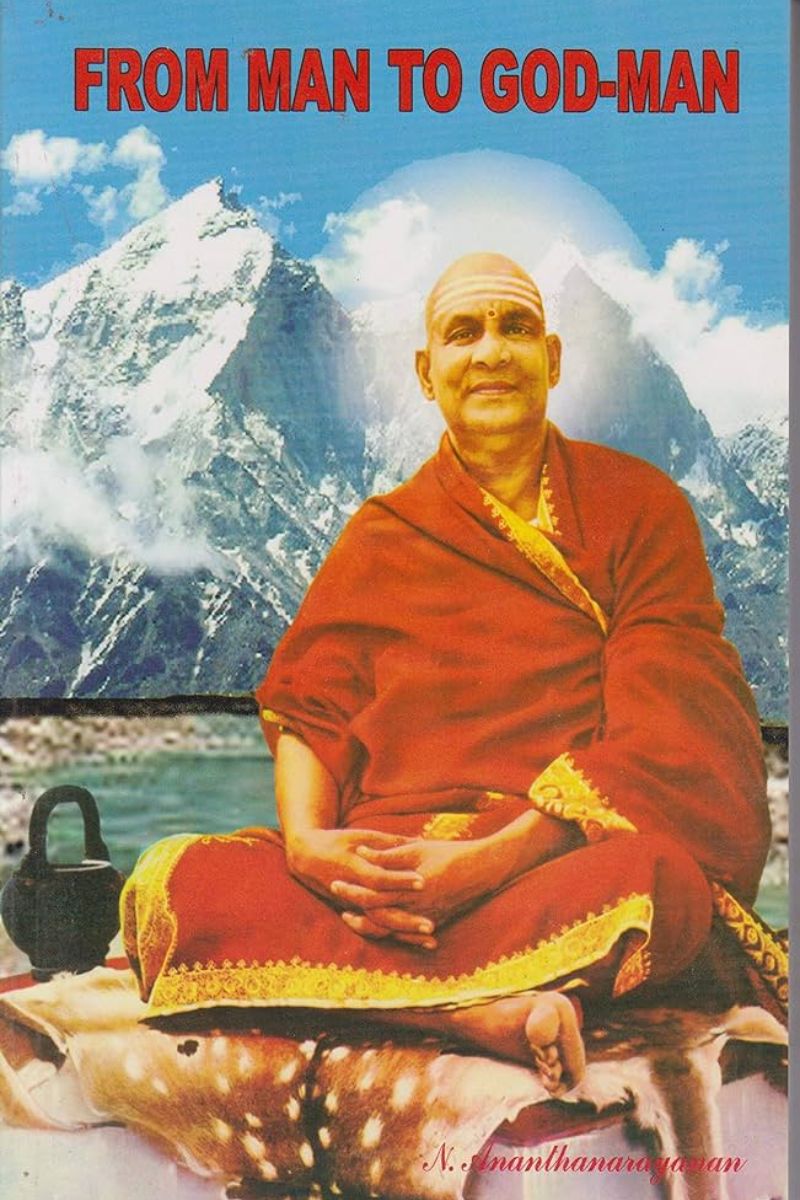
“Crave for a thing, you will get it. Renounce the craving, the object will follow you by itself.” -Swami Sivananda


